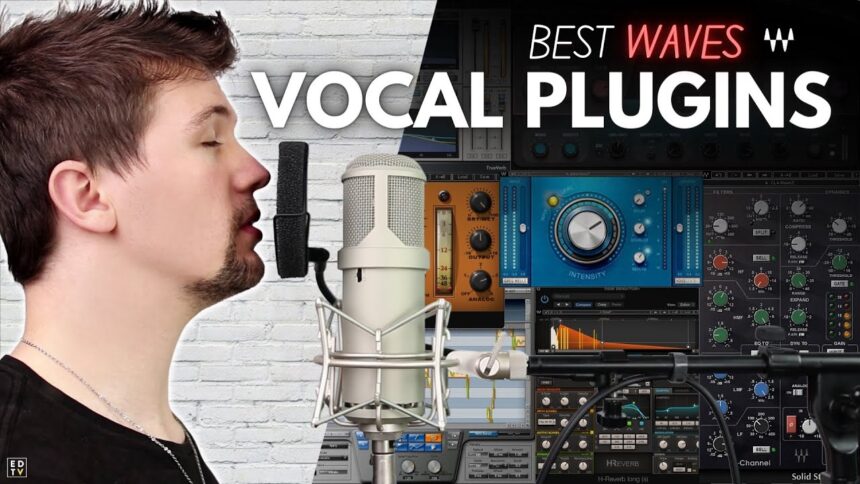What if you people have both lyrics and melody, but there’s no vocalist. Even if you have not enough studio time or you have got out of budget. This is where an AI singing voice generator from Acestudio comes into the scene that gives you natural and expressive vocals in minutes.
The following steps will allow you to get your first vocal track without any huge manual intervention.
Step 1: Install ACE Studio
Go to acestudio.ai and download the AI singing voice generator in a single go. It works on both Windows and macOS. The installation process is simple, all you need to run the installer and follow the instructions.
Once installed, you have to launch the app. You’ll be entertained with a clean UI that feels familiar even if you have ever used a DAW.
Even if you’re new, there’s no need to worry. It’s straight-forward and specifically built for creators, not engineers.
Step 2: Make A Selection for a Voice Model
An AI singing voice generator by ACE Studio provides you with a range of voices that ranges from breathy and emotional to bright and sharp. Each voice has its own tone, strengths, and style.
Browse the built-in voice library and preview a few. You’ll hear immediate differences in tone and character. If you decide to proceed with a soft ballad, it offers Cenya which might be the one. And, something with more weight, you ought to go with Try Kevin or Chiffon.
Pick the one that fits your project’s vibe. You can always switch it later.
Step 3: Input Your Melody
Now the time comes to bring your melody to life.
You’ve got two options here:
- Draw the melody manually using the piano roll
- Import MIDI if you’ve already written something in another program
Each note you enter can come with fine-tuned pitch, duration, vibrato, and even how sharp or smooth the transitions sound. It’s not at all about robotic playback, but this is performance shaping.
If you need a subtle rise at the end of a phrase, you should have to draw it in. And, when you need to breath between two sections, you have to add a break marker.
Step 4: Add Lyrics
With your melody in the domain, you ought to start typing in the lyrics.
You can see that each syllable is mapped to a note. ACE Studio is capable of handling syllable separation and phonetics automatically, but if something sounds off, it’s best to tweak pronunciation.
Did you know! You don’t have to guess how it’ll sound. Just hit play and you’ll hear your lyrics sung in real time by the voice model you chose with an AI singing voice generator.
This part is super powerful even if you need to write vocal melodies on the fly or demoing ideas.
Step 5: Adjust Expression and Emotion
This is where ACE Studio really stands out.
Use the expression curves to control:
- Pitch bends (glides into as well as out of notes)
- Dynamics (how loud or even soft each note is)
- Breathiness or clarity of tone
- Vibrato depth and speed
This is where a bit of subtle adjustments can turn a flat, lifeless is something that takes into emotionally rich.
This isn’t just tech mimicking vocals. It’s the vocals you are directing.
Step 6: Preview, Tweak, and Finally Refine
Play through the full vocal. Then, zoom in on tricky lines, nudging the time, tweaking a phrase or two. If you find something doesn’t sit right, make a click to fix it. The editing is non-destructive and super flexible.
Remember, it’s not crucial to make it perfect, but the best approach is to feel it real. Sometimes, that means adding a tiny imperfection on purpose, a thing that mimics real singers.
Step 7: Export the Vocal
If you are happy with the vocal performance, it’s time to bounce it.
Go to File > Export and choose your settings. WAV is ideal for importing into your DAW. ACE Studio lets you export the dry vocal or include light processing.
Once exported, you can:
- Drop it directly into your session
- Build a full mix around it
- Layer in harmonies using a different voice model
It also lets you export multiple takes with slightly different tones as well as stack them like you would in a real vocal session.
Step 8: Add Effects in Your DAW
After exporting, you ought to pull the vocal into your favorite DAW (Ableton, Logic, FL Studio — whatever you use).
Now’s the time to add:
- EQ to clean up the tone
- Compression to control dynamics
- Reverb/Delay to place the vocal in space
- Saturation or de-essing if needed
You ought to treat it like any other vocal, avoid to over-process it.
Step 9: Build the Song Around It (or Plug It In)
Once you start with the vocal, you can now readily write your track around it including: drums, chords, bass, synths. Or, if you already come with a beat or instrumental, all you need to fit the vocal into place.
Although the generated voice is artificial, still it does not sound that way when mixed right. An AI singing voice generator becomes a legit part of your music, just like any recorded take.
Let’s Conclude:
ACE Studio doesn’t just provide you with robotic vocals, it also offers creative control that one can only get with a live singer. To generate AI singing with this too, you just need a song idea and approximately 20 minutes of your time.


